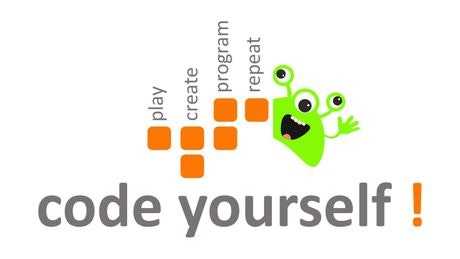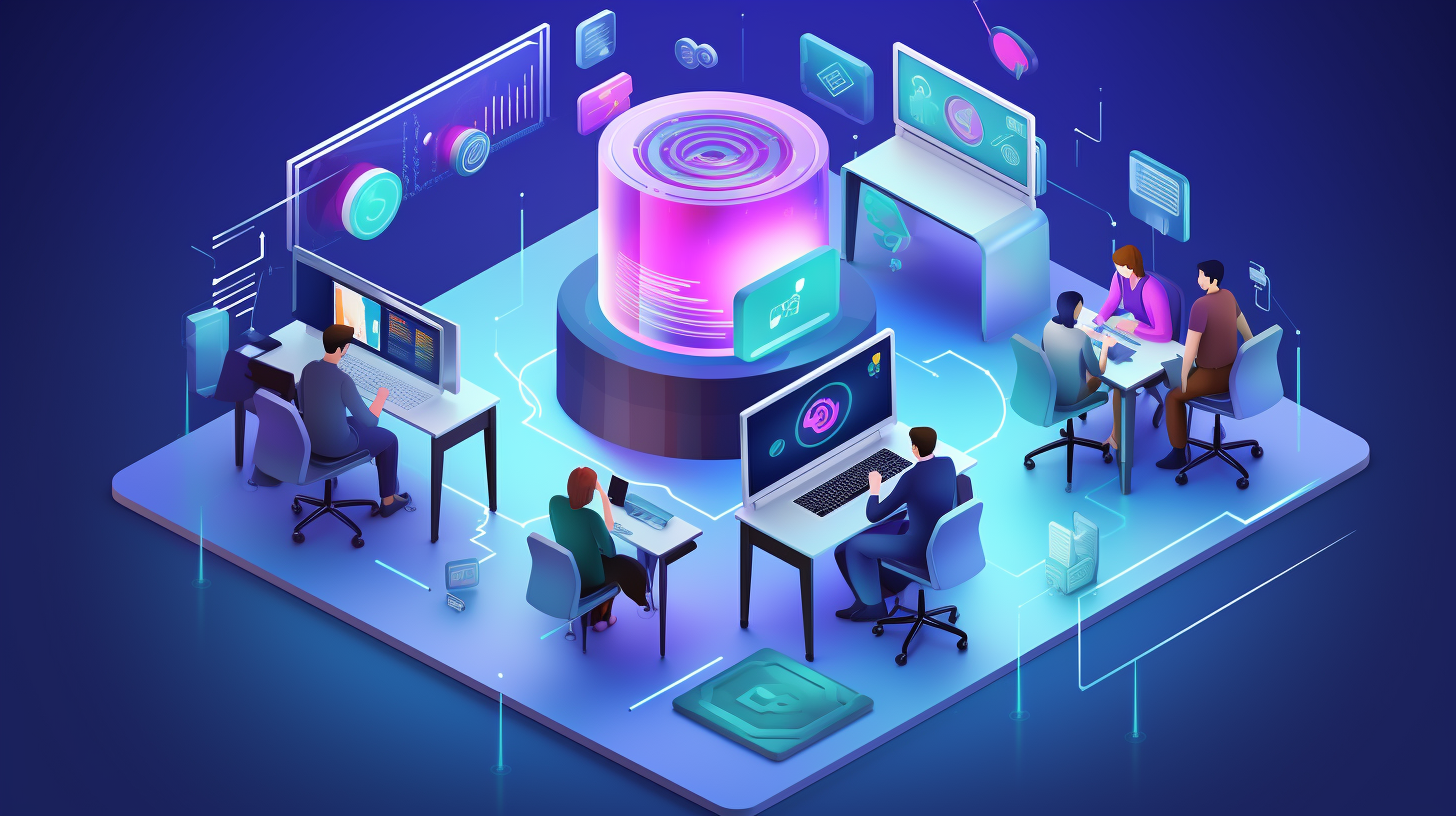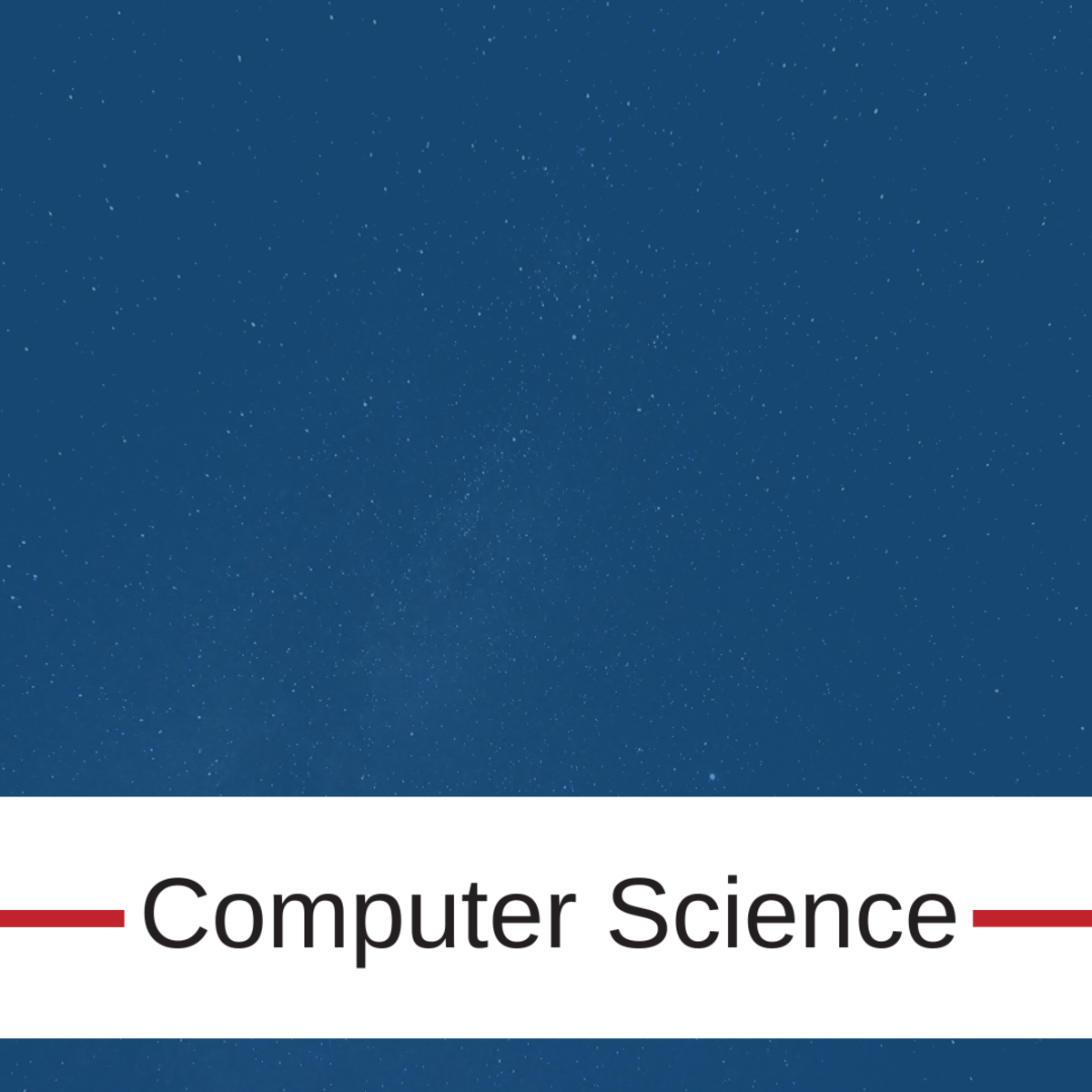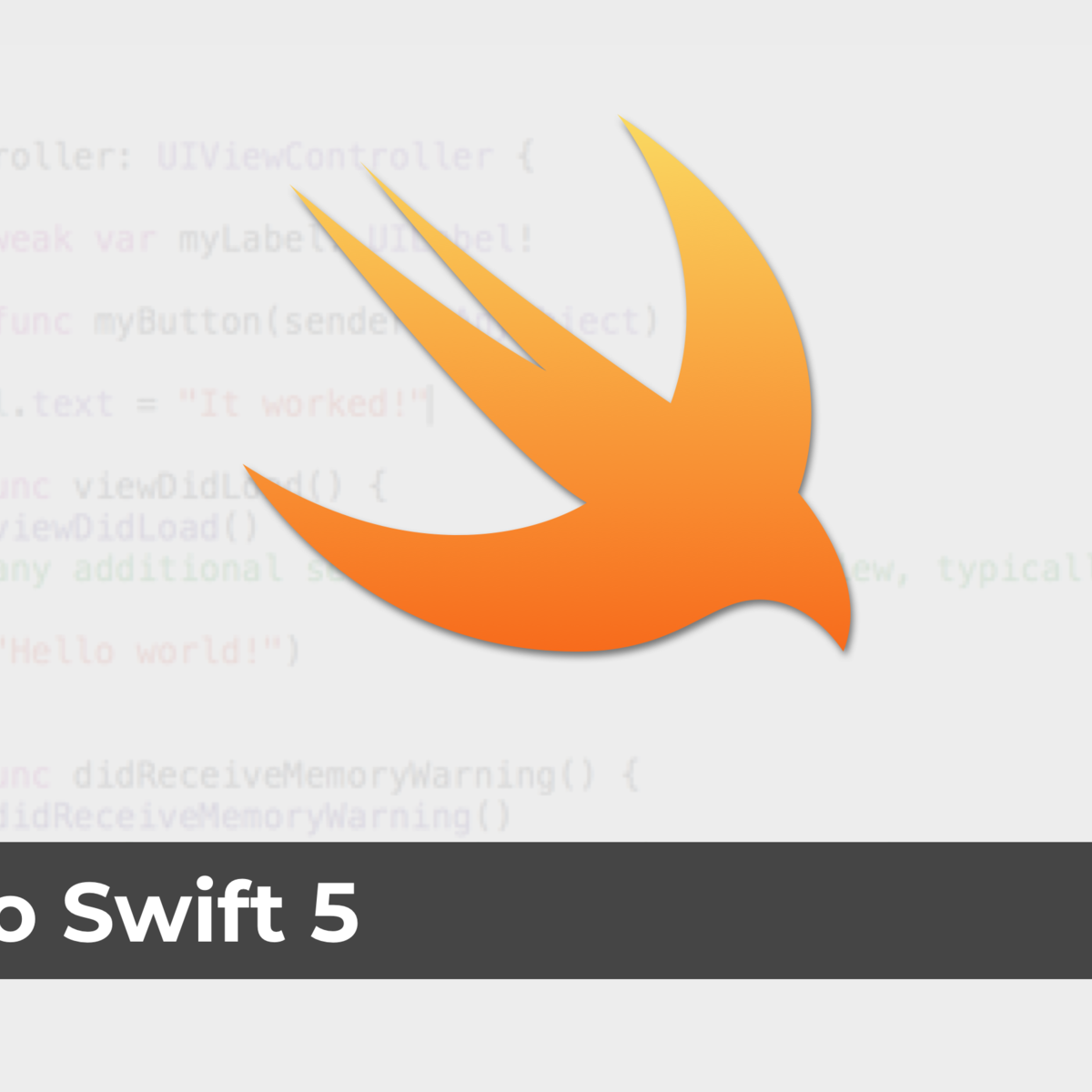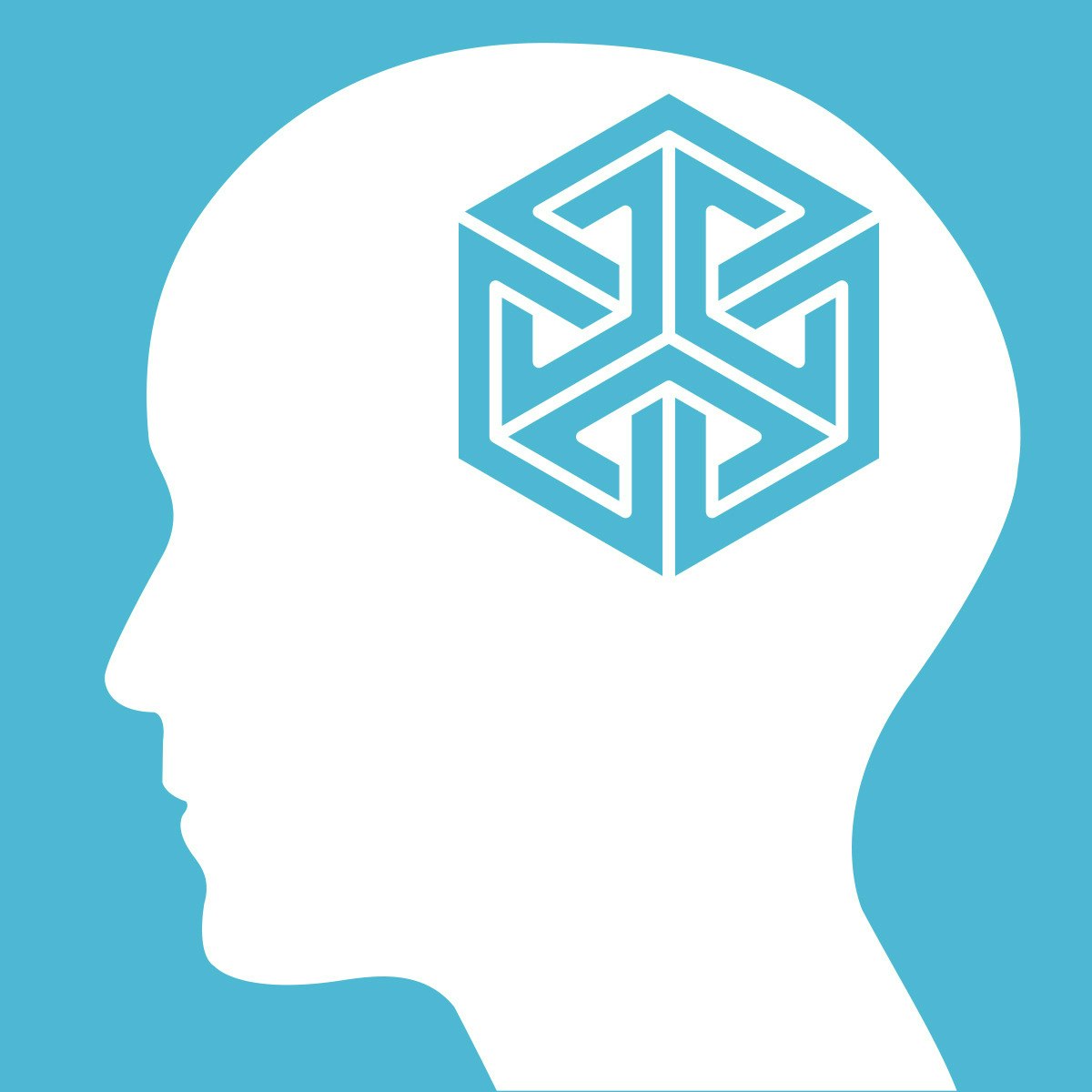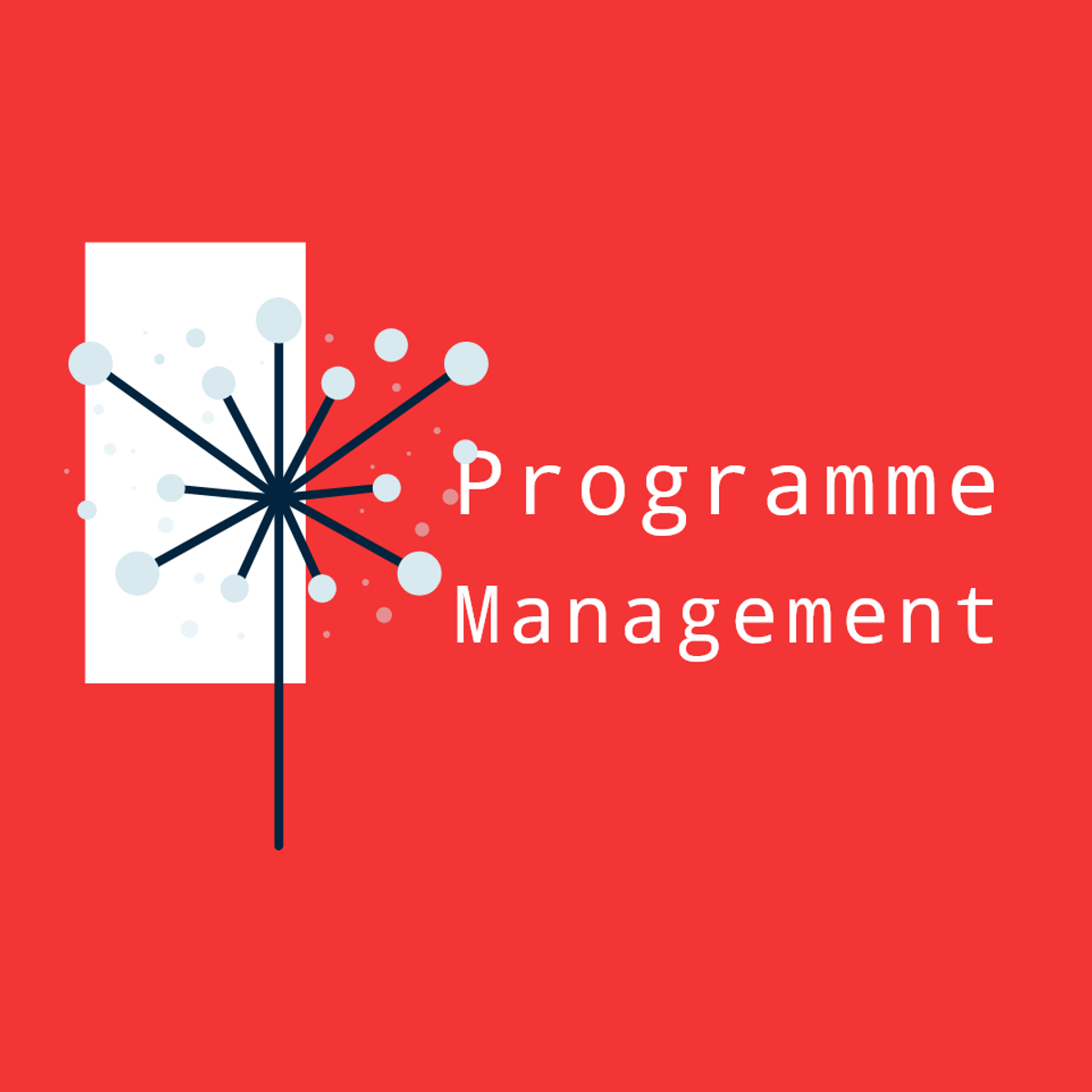Computer Programmer
Exploring a Career as a Computer Programmer
Computer programmers are the architects and builders of the digital world. At its core, computer programming involves writing instructions, known as code, that tell computers how to perform specific tasks. This ranges from creating simple scripts to automate repetitive actions, to developing complex software applications that power businesses, entertainment, and communication globally. Programmers translate human ideas and requirements into a language that machines can understand and execute, making technology accessible and functional.
Working as a computer programmer offers intellectually stimulating challenges and the satisfaction of creating tangible products. Many find excitement in the problem-solving aspect, dissecting complex issues and devising elegant, efficient solutions through code. The field is also characterized by continuous learning, as new programming languages, tools, and paradigms emerge constantly. Furthermore, the ability to contribute to innovative projects that can impact millions of users provides a strong sense of purpose and accomplishment.
Understanding the Role
What is Computer Programming?
Computer programming is the process of designing, writing, testing, debugging, and maintaining the source code of computer programs. This source code is written in one or more programming languages, such as Python, Java, C++, or JavaScript. The goal is to create a set of instructions that a computer can follow to achieve a desired outcome, whether it's running a website, analyzing data, controlling a robot, or playing a video game.
Think of a programmer like a translator and instruction writer for computers. Computers don't understand human languages directly; they operate based on precise, logical steps. A programmer takes a concept or a problem, breaks it down into logical steps, and then writes these steps using the specific syntax and rules of a programming language. The computer then executes these instructions sequentially.
The role extends beyond just writing code. It involves understanding the problem domain, designing efficient algorithms (step-by-step procedures for calculations), structuring data effectively, and ensuring the final program is reliable, secure, and easy to maintain or update later. It's a blend of creativity, logic, and technical skill.
These introductory courses offer a glimpse into the fundamental concepts and practices of programming.
Core Responsibilities
A computer programmer's day-to-day tasks can vary significantly depending on the industry, company size, and specific project. However, some core responsibilities are common across most programming roles. Primarily, programmers write and test code that allows computer applications and software programs to function properly. They turn the program designs created by software developers and engineers into instructions a computer can follow.
Debugging is another crucial responsibility. Programmers meticulously review code to identify and fix errors, ensuring the software runs smoothly and efficiently. This often involves using specialized debugging tools and applying logical problem-solving skills. They also update and expand existing programs, adapting them to new requirements or improving their performance.
Collaboration is often key. Programmers frequently work with designers, software engineers, project managers, and clients to understand requirements, discuss technical challenges, and integrate their code with other parts of a system. Documentation, writing clear explanations of how the code works, is also vital for maintenance and future development by other team members.
Programmers vs. Software Engineers vs. Related Roles
While the terms "computer programmer" and "software engineer" are sometimes used interchangeably, there can be distinctions. Traditionally, a programmer focuses more narrowly on translating designs into code. A software engineer, conversely, often takes a broader approach, involved in the entire software development lifecycle – from requirement analysis and system design to implementation, testing, deployment, and maintenance. Engineering implies applying systematic, disciplined, and quantifiable approaches.
However, in modern tech environments, these lines blur considerably. Many roles titled "Software Engineer" involve significant amounts of programming, and many "Programmers" engage in design and architectural decisions. A Software Developer is another common title, often encompassing aspects of both programming and engineering. Their focus might be on building specific features or applications.
Other related roles include Web Developers, who specialize in building websites and web applications; Data Scientists, who analyze complex data using programming skills; DevOps Engineers, who bridge development and IT operations; and Quality Assurance (QA) Engineers, who focus on testing software to ensure quality. Each role requires programming skills but applies them within a different context and with varying emphasis on other skills like system architecture, data analysis, or testing methodologies.
Historical Context and Evolution
Computer programming's roots trace back to the 19th century with Ada Lovelace, often considered the first programmer, who wrote algorithms for Charles Babbage's analytical engine. Early programming in the mid-20th century involved physically wiring circuits or using punch cards to input instructions into massive, room-sized computers. Languages like Fortran and COBOL emerged, making programming slightly more abstract and human-readable.
The development of high-level languages like C in the 1970s, followed by object-oriented languages like C++ and Java in the 80s and 90s, revolutionized the field. These advancements allowed for more complex software and increased programmer productivity. The rise of personal computers and the internet created enormous demand for programmers to build operating systems, applications, and websites.
Today, programming is more diverse than ever, with specialized languages for web development (JavaScript, Python), mobile apps (Swift, Kotlin), data science (Python, R), and more. The rise of open-source software, cloud computing, artificial intelligence, and agile development methodologies continues to shape the profession, demanding constant adaptation and learning from programmers.
Key Skills and Qualifications
Technical Skills
Proficiency in one or more programming languages is fundamental. Popular choices include Python (versatile, widely used in web development, data science, AI), JavaScript (essential for front-end web development, increasingly used on the back-end via Node.js), Java (common in large enterprise systems, Android development), C++ (used in game development, high-performance systems, embedded systems), and C# (popular for Windows applications, game development with Unity). Understanding the paradigms associated with these languages (e.g., Object-Oriented Programming (OOP), functional programming) is crucial.
Beyond specific languages, a strong grasp of core computer science concepts is vital. This includes understanding data structures (like arrays, linked lists, trees, hash tables) which organize data efficiently, and algorithms (like sorting, searching) which provide step-by-step methods for solving computational problems. Knowledge of databases (SQL or NoSQL) for storing and retrieving data, operating systems concepts, and networking fundamentals are also frequently required.
Familiarity with development tools is essential. This includes using Integrated Development Environments (IDEs) like Visual Studio Code or IntelliJ IDEA for writing and debugging code, version control systems like Git for tracking changes and collaborating, and understanding command-line interfaces. Depending on the specialization, knowledge of specific frameworks (like React, Angular for web; .NET for C#), libraries, and cloud platforms (AWS, Azure, Google Cloud) might be necessary.
These courses cover essential technical foundations like programming languages, data structures, and algorithms.
Soft Skills
While technical proficiency is critical, soft skills are equally important for a successful programming career. Problem-solving is paramount; programmers must be able to analyze complex issues, break them down into manageable parts, and devise logical solutions. This often requires persistence and creativity, especially when encountering difficult bugs or novel challenges.
Communication skills are essential for collaboration. Programmers need to clearly explain technical concepts to non-technical colleagues or clients, understand requirements accurately, and articulate their ideas and concerns within a team. Written communication is also vital for documentation and code comments.
Teamwork is increasingly important as most software development happens in teams. Programmers must be able to collaborate effectively, share knowledge, provide constructive feedback, and integrate their work with others. Adaptability and a willingness to learn are crucial in a field that evolves rapidly. Time management and attention to detail also contribute significantly to productivity and code quality.
Common Certifications
While not always mandatory, certifications can demonstrate specific knowledge and commitment to professional development. Certifications often focus on particular technologies, programming languages, or platforms. For instance, cloud providers like Amazon Web Services (AWS), Microsoft Azure, and Google Cloud Platform (GCP) offer certifications for developers working with their services.
Language-specific certifications exist, such as those for Java (e.g., Oracle Certified Java Programmer) or Python (e.g., Python Institute certifications). Database vendors like Oracle and Microsoft also offer certifications related to database administration and development. Security certifications (like CompTIA Security+ or CISSP, though often for more specialized security roles) can also be relevant, especially for programmers working on sensitive applications.
The relevance of a specific certification depends heavily on the desired role and industry. Some employers value them more than others. Often, practical experience and a strong project portfolio carry more weight than certifications alone, but they can be a useful supplement, particularly when entering the field or specializing.
Building a Strong Portfolio
A portfolio is a collection of projects that showcases your programming skills and experience. For aspiring programmers, especially those without extensive professional experience or formal degrees, a strong portfolio is often the most compelling evidence of their abilities. It demonstrates practical application of technical knowledge and provides tangible examples of work.
Start by building projects that interest you or solve a real-world problem, even a small one. Contribute to open-source projects on platforms like GitHub; this shows collaboration skills and allows potential employers to see your code in a real-world context. Include diverse projects that demonstrate proficiency in different languages, frameworks, or problem domains relevant to your career goals.
Ensure your portfolio is well-documented. Each project should have a clear description of its purpose, the technologies used, and your specific contributions. Include links to live demos (if applicable) and the source code repository (e.g., GitHub). A clean, well-organized codebase with clear comments is crucial. Your portfolio itself, often hosted on a personal website or a platform like GitHub Pages, should be professional and easy to navigate.
Formal Education Pathways
High School Preparation
Building a foundation for a programming career can start in high school. Strong performance in mathematics, particularly algebra, geometry, pre-calculus, and calculus, is highly beneficial as it develops logical reasoning and problem-solving skills fundamental to programming. Courses in physics can also be helpful due to their emphasis on analytical thinking.
Taking any available computer science courses is highly recommended. These might include introductory programming classes (often using languages like Python or Java), AP Computer Science A (focused on Java and object-oriented programming), or AP Computer Science Principles (providing a broader overview of computing concepts). Even courses focused on web design or digital literacy can offer relevant exposure.
Engaging in extracurricular activities like coding clubs, robotics competitions (e.g., FIRST Robotics), or contributing to open-source projects can provide valuable hands-on experience and demonstrate passion. Self-study using online resources to learn basic programming concepts or specific languages is also an excellent way to prepare.
Undergraduate Degrees
A Bachelor's degree in Computer Science (CS) is the most traditional and common pathway into programming and software engineering roles. CS programs typically offer a comprehensive theoretical foundation, covering algorithms, data structures, computer architecture, operating systems, programming language theory, and software engineering principles. They often include advanced coursework in areas like artificial intelligence, cybersecurity, databases, and networking.
Other related degrees can also lead to programming careers. Information Technology (IT) programs may focus more on the practical application of technology within organizations, including networking, system administration, and database management, but often include significant programming components. Software Engineering degrees specifically emphasize the methodologies and practices for designing, developing, testing, and maintaining large software systems.
Degrees in Computer Engineering bridge electrical engineering and computer science, focusing on hardware design but also requiring substantial programming skills, particularly for embedded systems. Even degrees in fields like Mathematics, Physics, or Electrical Engineering can be viable entry points, especially if supplemented with programming coursework or self-study, as they develop strong analytical and quantitative skills valued in many programming domains.
Graduate Programs and Research
For those seeking advanced technical roles, specialization, or careers in research and academia, graduate studies (Master's or Ph.D.) in Computer Science or related fields can be beneficial. Master's programs often allow students to deepen their knowledge in specific areas like Artificial Intelligence, Machine Learning, Cybersecurity, Data Science, or Human-Computer Interaction. They can be course-based, project-based, or thesis-based.
A Master's degree can enhance career prospects, potentially leading to higher starting salaries or more specialized roles. It can also serve as a stepping stone for individuals with undergraduate degrees in other fields who wish to transition into computer science.
A Ph.D. program is research-intensive, culminating in a dissertation that contributes original knowledge to the field. It prepares individuals for careers in academic research and teaching, or for research and development roles in industry, particularly in cutting-edge areas requiring deep expertise. Pursuing graduate studies requires a strong academic record and a clear interest in advanced topics or research.
Alternative Degrees with Programming Applications
Programming skills are valuable across a wide range of disciplines beyond traditional CS or IT degrees. Many fields increasingly rely on computational methods, creating opportunities for individuals who combine domain expertise with programming ability. For example, degrees in Computational Biology or Bioinformatics heavily involve programming to analyze biological data.
Fields like Data Science and Statistics often require degrees in Statistics, Mathematics, or Economics, but programming (especially in Python or R) is a core skill for data manipulation, analysis, and modeling. Physics and Engineering disciplines frequently use programming for simulations, modeling, and data analysis.
Even fields within the humanities and social sciences are incorporating computational techniques. Digital Humanities uses programming for text analysis, data visualization, and building digital archives. Computational Social Science applies programming to model social phenomena and analyze large datasets. A degree in one of these areas, combined with strong programming skills acquired through coursework or self-study, can lead to unique interdisciplinary career paths.
Online Learning and Self-Taught Pathways
Benefits and Limitations of Online Education
Online learning offers significant flexibility, allowing individuals to study at their own pace and schedule, often around existing work or personal commitments. It provides access to a vast array of courses from various institutions and platforms, covering nearly every programming language and concept imaginable. Often, online courses are more affordable than traditional degree programs.
Platforms like OpenCourser aggregate thousands of courses, making it easier to find resources tailored to specific learning goals. Features like reviews, syllabi previews, and the ability to save courses to a list help learners make informed choices. Many online courses offer certificates upon completion, which can be added to resumes or LinkedIn profiles.
However, online learning requires significant self-discipline and motivation. Without the structure of in-person classes, it can be challenging to stay on track. Networking opportunities might be less organic compared to traditional programs. While certificates demonstrate completion, employers may still weigh practical projects and technical interview performance more heavily than online course credentials alone, especially when compared to formal degrees for entry-level roles.
To help learners find the best courses and stay motivated, OpenCourser provides comprehensive resources. The Learner's Guide offers tips on creating study plans, earning certificates, and leveraging online learning for career advancement.
Designing a Self-Guided Curriculum
Creating a structured learning path is crucial for self-taught programmers. Start by defining clear goals: What kind of programmer do you want to be? (e.g., web developer, mobile developer, data analyst). Research the essential skills and technologies for that path. Break down the learning process into manageable modules, starting with fundamentals.
Begin with core programming concepts (variables, data types, control flow, functions) using an introductory language like Python. Progress to data structures and algorithms, as these are universal and critical for problem-solving. Then, dive into technologies specific to your chosen path (e.g., HTML/CSS/JavaScript frameworks for web development; SQL for data roles).
Utilize a mix of resources: online courses for structured learning, documentation for in-depth understanding, books for foundational knowledge, and coding practice platforms (like LeetCode, HackerRank) to hone problem-solving skills. Set realistic timelines and milestones, and regularly review your progress. OpenCourser's ability to save courses to lists can be helpful in building and organizing your personalized curriculum.
These resources cover foundational programming concepts applicable across many domains.
Project-Based Skill Validation
For self-taught learners or those supplementing formal education, projects are the primary way to demonstrate competence. Theoretical knowledge is important, but employers want to see that you can apply it to build real things. Projects serve as tangible proof of your skills and problem-solving abilities.
Choose projects that align with your learning goals and desired career path. Start small and gradually increase complexity. Replicating existing applications (like a simple social media feed, a basic e-commerce site, or a classic game) is a good way to learn common patterns and technologies. As you advance, tackle more unique problems or contribute to existing open-source projects.
Focus on building projects from start to finish, including planning, coding, testing, and potentially deployment. Document your process and code clearly. Hosting your projects on platforms like GitHub not only showcases your work but also demonstrates your familiarity with version control, a critical industry skill. A portfolio filled with well-executed, documented projects is often more persuasive than certificates alone.
Integration with Formal Education
Online courses and self-study can effectively supplement formal education. University or college courses provide foundational theory and structure, while online resources offer opportunities to explore specific technologies, languages, or frameworks not covered in depth in the curriculum. This allows students to tailor their learning to their interests and career goals.
Students can use online courses to prepare for challenging university subjects, review complex topics, or learn practical tools used in industry (like specific IDEs, version control systems, or cloud platforms) that might receive less focus in theoretical coursework. Building projects based on online tutorials can bolster a student's portfolio beyond assigned coursework.
Furthermore, online learning facilitates continuous professional development even after graduation. The tech landscape changes rapidly, and programmers must constantly update their skills. Online platforms provide accessible and often affordable ways to learn about new languages, libraries, and methodologies throughout one's career, complementing on-the-job learning and formal training.
Career Progression for Computer Programmers
Entry-Level Roles and Expectations
Graduates or individuals transitioning into programming typically start in junior or entry-level roles, such as Junior Developer, Associate Software Engineer, or Programmer I. In these positions, the primary focus is usually on learning the company's codebase, tools, and development processes while contributing to smaller, well-defined tasks under supervision.
Expectations often include writing and debugging code for specific features or modules, participating in code reviews (both giving and receiving feedback), writing unit tests, and collaborating with senior team members. Strong foundational knowledge of programming principles, data structures, and algorithms is expected, along with proficiency in at least one relevant programming language.
Soft skills like communication, eagerness to learn, and adaptability are highly valued. Entry-level programmers are expected to ask questions, seek guidance, and gradually take on more responsibility as they gain experience and familiarity with the systems they work on. Initial tasks might involve bug fixing, implementing small enhancements, or working on internal tools before moving to more complex, customer-facing features.
Mid-Career Specialization Paths
After gaining several years of experience, programmers often specialize. Mid-career roles might include titles like Software Engineer, Senior Programmer, or specialized roles based on technology or domain. Specialization allows for deeper expertise and often leads to increased responsibility and compensation.
Common specialization paths include: Web Development: Focusing on front-end (user interface using React, Angular, Vue), back-end (server-side logic using Node.js, Python/Django, Java/Spring), or full-stack (both). Mobile Development: Creating applications for iOS (Swift, Objective-C) or Android (Kotlin, Java). Data Science / Machine Learning / AI: Using programming (primarily Python) to analyze data, build predictive models, and develop AI systems. Cybersecurity: Developing secure software, performing penetration testing, or analyzing security vulnerabilities. Cloud Computing: Designing, deploying, and managing applications on platforms like AWS, Azure, or GCP. Game Development: Using engines like Unity (C#) or Unreal Engine (C++) to create video games. Embedded Systems: Programming hardware devices and microcontrollers (often using C or C++).
Choosing a specialization depends on individual interests, market demand, and opportunities within one's company or industry. Continuous learning is essential to stay current within any specialization.
Leadership vs. Technical Track Progression
As programmers gain seniority, their career paths often diverge into two main tracks: technical leadership and people management. The technical track allows individuals to deepen their expertise and influence through technical contributions without managing direct reports.
Roles on the technical track include Senior/Staff/Principal Engineer or Software Architect. These individuals focus on complex technical challenges, system design, setting technical direction, mentoring junior engineers, and driving innovation. They remain deeply involved in coding, design, and architecture.
The management track involves transitioning into roles like Engineering Manager, Team Lead, or Director of Engineering. These roles focus on leading teams, managing projects, hiring and developing talent, setting strategy, and coordinating with other departments. While technical understanding remains important, the emphasis shifts towards people and process management. Some organizations offer hybrid roles, but typically, a choice between deepening technical expertise or developing management skills becomes necessary.
Salary Benchmarks and Global Variations
Salaries for computer programmers vary significantly based on factors like location, years of experience, specialization, industry, company size, and educational background. Generally, programming is a well-compensated field due to high demand for skilled professionals.
In major tech hubs (like Silicon Valley, Seattle, New York) and countries with high costs of living (like Switzerland, USA), salaries tend to be higher than in other regions. Entry-level positions typically offer competitive starting salaries, which can increase substantially with experience and specialization. Senior engineers and those in high-demand fields like AI or cybersecurity often command premium salaries.
Global variations are significant. Salaries in developing countries may be considerably lower in absolute terms, although they might still be very competitive relative to the local cost of living. Resources like salary comparison websites (e.g., Glassdoor, Levels.fyi) and industry reports from firms like Robert Half provide benchmarks, but it's crucial to consider the specific geographic market and role context. Benefits packages, including stock options (especially in startups and large tech companies), health insurance, and retirement plans, also form a significant part of total compensation.
Emerging Technologies and Computer Programming
Impact of AI/ML on Programming
Artificial Intelligence (AI) and Machine Learning (ML) are profoundly impacting computer programming. AI-powered tools, like GitHub Copilot or ChatGPT, can now assist programmers by suggesting code snippets, completing lines of code, translating code between languages, explaining complex code segments, and even generating unit tests. This has the potential to significantly increase programmer productivity and automate some routine coding tasks.
However, AI is not replacing programmers but rather changing the nature of their work. While AI can handle repetitive or boilerplate code, human programmers are still needed for complex problem-solving, understanding nuanced requirements, designing system architecture, ensuring ethical considerations, and debugging intricate issues. The role may evolve towards supervising AI tools, integrating AI components into applications, and focusing on higher-level design and strategy.
Programmers increasingly need to understand AI/ML concepts, at least at a high level, to effectively utilize AI tools and build AI-powered features. Skills in data handling, understanding model limitations, and prompt engineering (crafting effective instructions for AI models) are becoming more valuable. The focus might shift from writing every line of code to orchestrating and integrating AI-driven components.
Quantum Computing Preparedness
Quantum computing, while still in its early stages of practical application, represents a potential paradigm shift for certain types of computational problems. Unlike classical computers that use bits (0s or 1s), quantum computers use qubits, which can exist in multiple states simultaneously (superposition) and can be linked together (entanglement). This allows them to tackle problems currently intractable for even the most powerful classical supercomputers, particularly in areas like cryptography, materials science, drug discovery, and complex optimization.
For most programmers today, deep knowledge of quantum computing is not required. However, awareness of its principles and potential applications is becoming increasingly relevant, especially for those in research or working on specific computationally intensive problems. New programming languages and frameworks (like Qiskit, Q#, Cirq) are being developed for quantum computers.
Preparedness involves understanding the fundamental concepts of quantum mechanics relevant to computing (qubits, superposition, entanglement, measurement) and learning the basics of quantum algorithms (like Shor's algorithm for factoring or Grover's algorithm for searching). Online courses and resources are emerging to help programmers gain familiarity with this nascent field, positioning them for future opportunities as the technology matures.
Low-Code/No-Code Platforms
Low-code and no-code platforms enable individuals with limited or no traditional programming skills to build applications using visual interfaces, drag-and-drop components, and model-driven logic. These platforms aim to accelerate application development, reduce the need for specialized programming expertise for simpler tasks, and empower "citizen developers" within businesses.
These platforms are effective for building certain types of applications quickly, such as internal business tools, simple websites, or automating workflows. They can free up professional programmers to focus on more complex, custom development tasks that require deep coding expertise and cannot be easily addressed by these platforms.
However, low-code/no-code platforms have limitations regarding customization, scalability, integration with complex systems, and performance optimization. They are not replacing traditional programming but rather augmenting it, creating a new tier of application development. Programmers may find themselves working alongside these platforms, building custom components for them, or integrating applications built on them with larger enterprise systems.
Sustainability in Software Development
Sustainability, particularly environmental sustainability, is becoming an increasingly important consideration in software development, often referred to as "Green IT" or "Sustainable Software Engineering." This involves designing, developing, and running software applications in ways that minimize energy consumption and environmental impact.
Key principles include writing efficient code that requires less computational power, optimizing algorithms and data structures, choosing energy-efficient hardware and cloud infrastructure, minimizing data transfer, and designing applications for longevity and resource efficiency. This can involve selecting appropriate programming languages known for efficiency, optimizing database queries, and implementing power-saving modes.
Awareness of the energy footprint of software and infrastructure is growing. Programmers can contribute by considering performance and resource usage during development, advocating for efficient infrastructure choices, and participating in initiatives like the Green Software Foundation. While not yet a primary focus in all development roles, understanding sustainable software practices is likely to become more valued as environmental concerns intensify.
Industry Applications and Specializations
Healthcare IT Systems Development
Programming plays a critical role in the healthcare industry, driving innovations in patient care, medical records management, diagnostics, and research. Programmers in this field develop and maintain Electronic Health Record (EHR) systems, practice management software, medical imaging analysis tools, telemedicine platforms, and mobile health applications.
Key challenges include ensuring data security and privacy (compliance with regulations like HIPAA in the US), interoperability between different healthcare systems, and creating user-friendly interfaces for clinicians and patients. Common technologies include Java, C#, Python, and database systems like SQL Server or Oracle.
Specialized knowledge of healthcare workflows, medical terminology, and relevant standards (like HL7 or FHIR for data exchange) is often beneficial. Programmers contribute to improving efficiency, reducing errors, enabling data-driven clinical decisions, and making healthcare more accessible.
Fintech Programming Requirements
The financial technology (Fintech) sector relies heavily on programmers to build and maintain trading platforms, banking applications, payment processing systems, risk management software, robo-advisors, and blockchain-based solutions. Security, reliability, and performance are paramount in this industry.
Programmers in Fintech often work with languages like Java, C++, Python, and sometimes specialized languages for quantitative analysis. Strong understanding of algorithms, data structures, database management, network protocols, and cybersecurity principles is essential. Knowledge of financial markets, trading algorithms, regulatory compliance, and specific financial protocols can be a significant advantage.
The field demands high accuracy and low latency, especially in areas like high-frequency trading. Developing secure authentication methods, encrypting sensitive data, and ensuring system resilience against failures are critical responsibilities.
Game Development Ecosystems
Computer programmers are central to the video game industry, bringing game designs to life. They write code for game logic, physics simulation, artificial intelligence (AI) for non-player characters (NPCs), graphics rendering, user interfaces, networking for multiplayer games, and integration with various hardware platforms (consoles, PCs, mobile devices).
Popular game engines like Unity (primarily using C#) and Unreal Engine (primarily using C++) provide frameworks and tools that streamline development, but strong programming skills remain essential for customization and performance optimization. Programmers often need expertise in C++ or C#, along with knowledge of linear algebra, physics concepts, and graphics APIs (like DirectX or OpenGL).
Specializations within game programming include engine programming, gameplay programming, AI programming, graphics programming, UI programming, and network programming. It's a demanding field often requiring optimization for performance and collaboration within large, multidisciplinary teams including artists, designers, and sound engineers.
Embedded Systems Programming
Embedded systems programming involves writing software for devices that are not typically thought of as general-purpose computers, such as microcontrollers in appliances, automotive control systems, medical devices, industrial robots, and IoT devices. This field requires a deep understanding of the interaction between hardware and software.
Programming languages like C and C++ are dominant due to their efficiency and ability to directly manipulate hardware resources. Assembly language might also be used for highly optimized or hardware-specific tasks. Programmers must work within constraints like limited memory, processing power, and real-time operation requirements.
Key skills include understanding microprocessor architecture, memory management, real-time operating systems (RTOS), hardware peripherals (sensors, actuators), and communication protocols (like I2C, SPI, CAN bus). Debugging often involves specialized hardware tools like oscilloscopes and logic analyzers. It's a field where efficiency, reliability, and safety are often critical concerns.
Work Environment and Challenges
Remote vs. Office Work Trends
The work environment for computer programmers has seen a significant shift towards remote and hybrid models, accelerated by recent global events. Programming tasks can often be performed effectively from anywhere with a stable internet connection, making it well-suited for remote work. Many tech companies now offer fully remote or flexible hybrid arrangements.
Remote work offers benefits like elimination of commute times, increased flexibility, and access to a wider range of job opportunities regardless of geographic location. However, it also presents challenges such as potential isolation, difficulties in spontaneous collaboration, and the need for strong self-discipline and effective communication using digital tools (Slack, Zoom, email).
Office-based work facilitates face-to-face interaction, potentially fostering stronger team cohesion and easier collaboration for some types of tasks. Hybrid models attempt to combine the benefits of both. The optimal arrangement often depends on individual preferences, team dynamics, and company culture. Regardless of the model, effective communication and collaboration tools are essential.
Burnout Prevention Strategies
Burnout, characterized by emotional exhaustion, cynicism, and reduced professional efficacy, can be a significant challenge in the demanding field of programming. Long hours, tight deadlines, complex problem-solving, and the pressure to constantly learn can contribute to stress and potential burnout.
Prevention strategies involve setting clear boundaries between work and personal life, especially important for remote workers. Taking regular breaks, prioritizing sleep, engaging in physical activity, and pursuing hobbies outside of coding are crucial for mental well-being. Effective time management techniques, like prioritizing tasks and avoiding over-commitment, can help manage workload.
Open communication with managers about workload and challenges is important. Seeking support from colleagues or mentors, practicing mindfulness or stress-reduction techniques, and taking vacations to disconnect fully can also help mitigate burnout risk. Companies can contribute by fostering a supportive culture, promoting work-life balance, managing workloads realistically, and providing mental health resources.
Continuous Learning Demands
The field of technology evolves at a rapid pace, making continuous learning a fundamental requirement for computer programmers. New programming languages, frameworks, libraries, tools, and methodologies emerge constantly. Staying relevant and effective requires a commitment to lifelong learning.
Programmers need to dedicate time to reading documentation, following industry blogs and news, experimenting with new technologies, and taking courses (online or in-person) to update their skills. This might involve learning a new language feature, mastering a new framework, understanding a new architectural pattern, or exploring an emerging field like AI or quantum computing.
While challenging, this constant learning can also be one of the most rewarding aspects of the career, offering continuous intellectual stimulation and growth opportunities. Employers often support this through training budgets, conference attendance, or dedicated learning time. Platforms like OpenCourser Notes provide updates on industry trends and learning resources.
Addressing Ageism in Tech
Ageism, or discrimination based on age, can be a concern within the tech industry, which sometimes exhibits a cultural bias towards youth. Some older programmers report facing challenges related to perceptions about their adaptability, speed, or familiarity with the latest technologies. Stereotypes may suggest that older workers are less innovative or resistant to change.
Combating ageism involves highlighting the value of experience, which often includes deep system knowledge, mentorship capabilities, strong problem-solving skills developed over many years, and a pragmatic approach to development. Continuous learning is key for older programmers to demonstrate their up-to-date skills and adaptability.
Building a strong professional network, focusing on demonstrable results, and showcasing adaptability can help mitigate potential biases. Companies play a vital role by fostering inclusive cultures that value experience, implementing unbiased hiring and promotion practices, and providing reskilling opportunities for all employees regardless of age.
Ethical Considerations in Programming
Data Privacy Implementation
Programmers have a significant responsibility regarding data privacy. They design and implement the systems that collect, store, process, and transmit user data. Implementing robust privacy measures is crucial to protect users and comply with regulations like GDPR (General Data Protection Regulation) in Europe or CCPA (California Consumer Privacy Act).
This involves techniques like data minimization (collecting only necessary data), anonymization or pseudonymization (removing or obscuring personally identifiable information), secure data storage (encryption at rest and in transit), and implementing access controls to limit who can view sensitive data. Programmers must build features that allow users to access, modify, and delete their data as required by regulations.
Ethical implementation means going beyond mere compliance. It involves considering the user's perspective, providing clear information about data usage, obtaining meaningful consent, and designing systems with privacy as a core principle ("privacy by design"), rather than an afterthought.
Algorithmic Bias Mitigation
Algorithms, particularly those used in machine learning and AI, can inadvertently perpetuate or even amplify existing societal biases if trained on biased data or designed without careful consideration. This can lead to unfair or discriminatory outcomes in areas like hiring, loan applications, facial recognition, and content recommendation.
Programmers and data scientists involved in developing these systems have an ethical obligation to understand and mitigate bias. This involves carefully examining training data for potential biases, choosing appropriate algorithms, designing fairness metrics to evaluate model outcomes across different demographic groups, and implementing techniques to reduce identified biases.
Transparency in how algorithms work and providing mechanisms for users to appeal or understand algorithmic decisions are also important ethical considerations. Mitigating bias is an ongoing process that requires diverse teams, rigorous testing, and a commitment to fairness throughout the development lifecycle.
Open-Source Licensing Conflicts
Open-source software (OSS) is widely used in programming, offering benefits like collaboration, transparency, and cost savings. However, OSS comes with various licenses (e.g., MIT, GPL, Apache) that dictate how the software can be used, modified, and distributed. Understanding and complying with these licenses is an ethical and legal responsibility for programmers.
Conflicts can arise if programmers incorporate OSS components with incompatible licenses into a proprietary project or fail to meet the obligations of a specific license (such as providing source code modifications under certain "copyleft" licenses like the GPL). This can lead to legal disputes and intellectual property issues.
Programmers need to be aware of the licenses associated with the libraries and tools they use, understand the implications of different license types, and ensure their usage complies with the terms. Companies often have policies and tools to manage OSS usage and ensure license compliance.
Responsible AI Development
As artificial intelligence becomes more powerful and integrated into society, the ethical implications of its development and deployment become increasingly critical. Responsible AI development encompasses a range of considerations beyond bias and privacy, including transparency, accountability, safety, and societal impact.
Programmers involved in AI need to consider how their systems make decisions (transparency/explainability), who is accountable if an AI system causes harm, how to ensure the system operates safely and reliably, and the potential broader societal consequences of the technology (e.g., impact on jobs, potential for misuse).
This involves adopting principles like "human-in-the-loop" design (ensuring human oversight), building robust testing and validation procedures, considering the potential for unintended consequences, and engaging in ongoing dialogue about the ethical guidelines governing AI development and deployment. It requires a multidisciplinary approach, involving ethicists, social scientists, policymakers, and the public alongside technical experts.
Future Outlook for Computer Programmers
Automation's Impact on Coding Jobs
The rise of AI-powered coding assistants and low-code/no-code platforms has sparked discussions about the potential automation of programming tasks. While these tools can automate routine coding, generate boilerplate code, and accelerate development, they are unlikely to eliminate the need for skilled human programmers in the foreseeable future.
Automation is more likely to change the nature of programming work rather than replace it entirely. Programmers will increasingly leverage AI tools to enhance productivity, focusing more on higher-level tasks like system design, complex problem-solving, understanding business requirements, ensuring security and ethics, and integrating diverse components (including AI models). The demand may shift towards skills that complement AI, such as creativity, critical thinking, and domain expertise.
Jobs focused purely on simple, repetitive coding tasks might face pressure, but roles requiring sophisticated software engineering skills, architectural design, specialized knowledge (like cybersecurity or embedded systems), and the ability to manage complex projects are expected to remain in high demand. Adaptability and continuous learning will be key to navigating these changes.
Global Market Demand Projections
The demand for skilled computer programmers and software developers remains strong globally and is projected to continue growing. According to the U.S. Bureau of Labor Statistics, employment for software developers, quality assurance analysts, and testers is projected to grow much faster than the average for all occupations over the next decade. Similar trends are observed in many other developed and developing economies.
This growth is driven by the increasing reliance on software across all industries, digital transformation initiatives, the expansion of cloud computing, big data analytics, AI, cybersecurity needs, and the proliferation of mobile devices and IoT. Businesses need programmers to build and maintain websites, applications, and systems; analyze data; secure networks; and innovate with new technologies.
While specific demand may fluctuate based on economic conditions and technological shifts, the long-term outlook for individuals with strong programming and software development skills appears positive. Specializations in high-growth areas like AI, cloud computing, and cybersecurity are likely to see particularly robust demand.
Reskilling Requirements for the AI Era
As AI tools become more integrated into the development workflow, programmers will need to adapt and acquire new skills. While foundational programming knowledge remains essential, proficiency in using AI coding assistants effectively (e.g., prompt engineering) will become increasingly valuable for boosting productivity.
Understanding core AI/ML concepts will be important for integrating AI features into applications and collaborating with data science teams. Skills related to data management, data pipelines, and evaluating the output of AI models will gain prominence. Furthermore, as AI handles more routine coding, soft skills like critical thinking, complex problem-solving, creativity, communication, and collaboration will become even more critical differentiators.
Focusing on system design, software architecture, cybersecurity, ethical considerations, and domain-specific knowledge will also be crucial. Continuous learning, flexibility, and the ability to adapt to new tools and paradigms will be essential for programmers to thrive in the AI era. Reskilling might involve taking specialized online courses, attending workshops, or pursuing certifications in AI, cloud, or data science.
Startup vs. Enterprise Opportunities
Career opportunities for programmers exist in vastly different environments, primarily startups and large enterprises, each offering distinct experiences. Startups often provide a fast-paced environment where programmers may wear multiple hats, have significant impact on the product, work closely with founders, and potentially benefit from equity options. However, they may also offer less job security, fewer resources, and less structured processes.
Large enterprises typically offer more stability, structured career paths, established processes, competitive salaries and benefits, and opportunities to work on large-scale systems impacting many users. Programmers in enterprises might specialize more narrowly and work within larger teams, potentially facing more bureaucracy but also having access to greater resources and mentorship programs.
The choice between a startup and an enterprise depends on individual preferences regarding work culture, risk tolerance, desired impact, and career goals. Both environments offer valuable learning experiences. Some programmers may move between startups and enterprises throughout their careers.
Frequently Asked Questions
Is programming becoming obsolete due to AI?
No, programming is not becoming obsolete, but it is evolving. AI tools are automating some routine coding tasks and increasing productivity, but they cannot replicate the complex problem-solving, creativity, system design, and ethical judgment required of skilled programmers and software engineers. The role is shifting towards higher-level tasks, leveraging AI as a tool, rather than being replaced by it. Demand for skilled developers remains high.
Can I become a programmer without a formal degree?
Yes, it is possible to become a programmer without a traditional four-year Computer Science degree. Many successful programmers are self-taught or have completed coding bootcamps or online certifications. A strong portfolio of projects demonstrating practical skills, proficiency in relevant technologies, and success in technical interviews are often more critical to employers than a specific degree, especially after gaining some experience. However, a degree can provide a strong theoretical foundation and may be preferred by some employers, particularly for entry-level roles in larger companies.
Building a solid foundation through structured online learning can be very effective. Using resources like OpenCourser to browse programming courses and build a learning path is a viable strategy.
What is the typical earning potential for senior programmers?
Earning potential for senior programmers varies significantly based on location, specialization, industry, and company. However, it is generally quite high. In major tech hubs in the US, experienced senior engineers, principal engineers, or software architects can earn well into six figures annually, often supplemented by substantial bonuses and stock options. Salaries in other countries vary but are typically very competitive within their local markets. High-demand specializations like AI/ML or cybersecurity often command even higher compensation.
How does programming differ across countries?
While core programming concepts are universal, practices can differ. Popular programming languages might vary based on regional industry focus (e.g., Java might be more prevalent in enterprise settings in some regions, while Python or Ruby might dominate web startups elsewhere). Work culture, expectations around work-life balance, salary levels, and common development methodologies (e.g., Agile adoption rates) can also differ significantly between countries and even companies within the same country.
Which industries have the highest programmer demand?
Demand for programmers is high across many industries undergoing digital transformation. The technology sector itself (software companies, internet services, hardware manufacturers) is a major employer. Other high-demand industries include finance (Fintech), healthcare (Health IT), e-commerce and retail, entertainment (especially gaming), automotive (due to autonomous driving and connected cars), and consulting firms that provide tech services to other sectors. Government and defense sectors also employ a significant number of programmers.
What mental health challenges might programmers face?
Programmers can face specific mental health challenges due to the nature of their work. The intense focus required for long periods, the pressure of deadlines, the frustration of debugging difficult problems, imposter syndrome (feeling inadequate despite evidence of competence), and the potential for isolation (especially in remote roles) can contribute to stress, anxiety, and burnout. The sedentary nature of the job and long hours staring at screens can also impact physical and mental well-being. Seeking support, maintaining work-life balance, and utilizing company wellness resources are important.
Embarking on a career as a computer programmer is a journey into a dynamic and intellectually rewarding field. It requires a blend of technical skill, logical thinking, creativity, and a commitment to continuous learning. Whether you pursue a formal degree, leverage online resources, or chart a self-taught path, the key lies in building a strong foundation, developing practical skills through projects, and adapting to the ever-evolving technological landscape. With dedication and persistence, a fulfilling career solving problems and building the future with code is well within reach.


